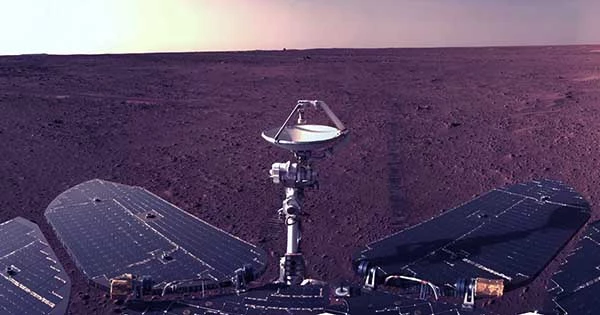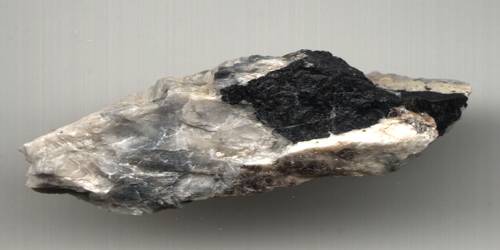According to new data from China’s Zhurong rover, liquid water may have been common on Mars as recently as 400,000 years ago, possibly in the form of snowmelt in the planet’s characteristic sandy dunes.
Since its arrival on Mars in early 2021, Zhurong has already changed our understanding of the planet. While we’ve known about the existence of ancient rivers and floods on Mars for decades, it was long assumed that the last of the liquid dried up three billion years ago – roughly around the time that the first single-celled organisms discovered photosynthesis on Earth.
But, just last year, Zhurong discovered tentative evidence that liquid water may have been present on the planet as recently as 700 million years ago, blowing that estimate out of the water.

That revision, however, pales in comparison to how much the potential timeline for liquid water on Mars has now been accelerated. Zhurong has spent the last few years studying Utopia Planitia, a massive plain on Mars’ surface that, at 3,300 kilometers across, comprises the solar system’s biggest impact basin, gathering data on the composition of the windswept dunes that litter the region.
What it discovered “provides critical clues to future exploration missions searching for signs of extant life,” according to the Chinese Academy of Sciences team involved in the expedition. According to the experts, these dunes are coated with thin, fractured crusts and clusters of particles, which can only be explained by the recent presence of liquid water.
“Sand dunes are a more modern landform,” Xiaoguang Qin, a Chinese Academy of Sciences scientist and one of the authors of a new report on the results released Friday, told New Scientist. “These crusts on the dunes’ surfaces have solidified the sand dunes and stopped them from moving.”
Instead of billions or hundreds of millions of years without liquid water, this new evidence suggests that the Red Planet may have had pockets of frost or snow between 1.4 million and 400,000 years ago – a startlingly recent time period, coinciding with the arrival of archaic humans in Europe.
The existence of specific mineral deposits in the dunes hints at the water’s wintery origin: particle analysis identified compounds such as sulfates, silica, iron oxide, and chlorides. According to the team’s report, the most plausible explanation for the formation of the fractures and crusts in the dunes is one in which “water vapor condensed as frost/snow on the dune surfaces when the temperature dropped below the frost point.” The frost/snow on salts in between the sand grains would then melt, forming salty water.”
“The saline water would vaporize, and salts precipitate… agglomerating particles and forming crust,” they say. Then, further drying or freezing would cause fissures in the crust.”
According to Qin, this was only conceivable because of Mars’ shifting axial tilt: a few million years ago, the planet’s poles were more directly facing the sun, forcing the ice caps to emit large volumes of water vapor, which collected as snow closer to the equator. While “no water ice was detected by any instrument on the Zhurong rover,” according to Qin, this model “offers a replenishing mechanism for vapor in the atmosphere to form frost or snow at low latitudes where the Zhurong rover has landed,” he said.
While it is possible that these dunes were formed by other, unknown geological processes, other researchers found the team’s arguments compelling. If right, it implies not just rethinking the Martian geological timescale, but also its topography, because sand dunes are so common on the planet, and there may be significantly more evidence of current water on Mars than previously thought.
“The phenomenon was documented at one site,” said Manasvi Lingam, an assistant professor of astrobiology at Florida Institute of Technology who was not involved in the study. “However, it should be applicable to a sizable portion of Mars’ surface at similar latitudes.”
















